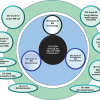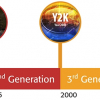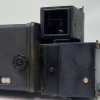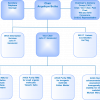Peter J. Jenks B.Sc, FRSC
The Jenks Partnership, Newhaven, Junction Road, Salisbury SP5 3AZ, UK. E-mail: [email protected]
How do analysts and quality managers source and use the reference materials, certified reference materials, pharmaceutical and clinical reference substances and proficiency testing services they need to meet the challenges of working in an ISO/IEC 17025 accredited laboratory?
This is question I first asked in 2001, when I had just started The Jenks Partnership. At that time the testing world was coming to terms with the release of ISO/IEC 17025 in 1999. Initial traction was slow, but with the release of the first revision in 2005 the world changed. From that point the production and supply of RMs started to change from being predominantly an activity of National Metrology Laboratories to a straightforward commercial business, regulated by a combination of ISO/IEC 17025 and ISO Guide 34.
We published our findings in the long defunct Reference Material Report newsletter, published by IM Publications and which I edited. The aim of the newsletter was to provide users and producers of RMs with industry background and news to help them better meet the requirements of the growing Quality Management world. You can read that article here.
In the 18, almost 19 years, that have passed, it seems I’ve become deeply embedded within the RM producer and user community. All through the years I’ve been a regular contributor to Spectroscopy Europe, observing and commenting on the ever-evolving world of chemical metrology: this is my 66th column!
Much has changed since 2001, back then in the RM world it was clear that laboratory accreditation and the supply of certified and other RMs was but a small part of the overall lab supply business.
In early 1999 I returned from Germany to work for LGC, my role was to put together a plan that would convert the “Office of Reference Materials”, partly funded by the UK Government, into the LGC Standards business. In 2000 LGC acquired Promochem GmbH and its network of suppliers and distributors. Since then LGC has grown its standards business so that it now forms a major part of LGC’s activities. After privatisation, LGC has been owned by a series of Private Equity investors, the most recent, KKR Inc. has put LGC on the market and it is attracting a very considerable interest.
Why should so many be interested in what may seem to be an obscure corner of the life science sector? Because over the last 20 years the RM business has grown, massively. Some estimates put the global market for all types of RMs, across all sectors, as close to $2 billion. That is a big business and it is getting bigger. The growth rate is hard to pin down, it varies considerably across the many sectors, but overall is probably 7 % a year. Add to that the very high levels of profitability and it is very attractive for investors looking for a safe place in and increasingly challenging world. The growth is due a couple of factors: first the accreditation of testing laboratories to ISO/IEC 17025, and for clinical laboratories to the related ISO/IEC 15189 standard and until every possible lab has been accredited the growth will continue.
The second driver is the increasing concerns of society about the pollution of food, water and air and the consequential regulation by Governments: this increases the amount of testing, which increases the demand for RMs and PT.
So, in the light of so much change, has the way RMs are used changed? We concluded it would be worthwhile to re-run the survey. This time it is web-based, a simple “tick box” process. This link (https://www.spectroscopyeurope.com/reference-material-survey-2019) will take you to the survey, which will run until the end of January 2020.
It is just five pages and should take no more than 10 minutes of your time to complete.
Once closed, we will analyse the responses and compare with the results from 2001. The results we will publish in Spectroscopy Europe as an extended Quality Matters column, later in 2020.
In the rich, vibrant market that the RM market has become, one might expect to see new entrants, investors seeking to build a new Promochem or LGC. But although there are new entrants, mostly exploring new niches such as RMs for next generation molecular biology analytical techniques, we do not see any major developments: why?
The simple answer is that starting a CRM producer from scratch is a long, costly and expensive process. The main challenge is achieving Accreditation, both ISO/IEC 17025 and ISO/IEC 17034 are essential and if PT is required, ISO/IEC 17043 is also required. All the businesses that make up the RM market were set up in the 1970s and 80s, many have been acquired and are part of the LGC, Merck, Agilent, Thermo Fisher and Waters businesses. The question has to be “Is this a positive development”?
The answers from the questionnaire, and in particular Sections 3 and 5, will help show if the level of service, of support and advice available has improved, or worsened, as a result of the changes over time.









